Dracula: Cruel, Ruthless And Bloodthirsty Ruler But Not A Vampire
A. Sutherland - AncientPages.com - No doubt, the most famous and intriguing Romanian figure in both history and fiction is Vlad Țepeș (Dracula). Behind Dracula's renowned name is also the extraordinary life and times of the evil Romanian ruler from 1431 to 1476. His nickname is the Impaler.
Vlad used severe methods to restore order in a lawless state. He also had the courage to drive the occupation force, the Ottomans out of the country. But Vlad had a dark side… too.
He was regarded with great fear in many regions of Europe and Asia in the fifteenth century and strived to equal by many later rulers like, for example, Ivan the Terrible; Dracula did, in fact, exist.
He was also highly honored by his fellow citizens and is still even today.
However, he was not a bloodthirsty vampire but a Prince in Wallachia, a part of present-day southern Romania.
Vlad lived in Romania among many rulers and historical figures, surrounded by prejudices and controversies in the atmosphere of betrayal, conquest, and imprisonment.
As the author writes in "Captivating History; History of Romania, "the greatness of historic individuals cannot be measured through the prism of the modern age. To fully understand the actions and motivations of Vlad Tepes, Stephen the Great, and Michael the Brave, we have to understand that Romania was positioned between the Ottoman Empire and Europe, between the traditional East and the modern West. Just as the world was torn between the great powers, so were the rulers of Romania.."
Vlad Tepes (the Impaler)
His real name was Vlad III, but he was often called Dracula. Romania is full of ancient tales of the supernatural and legends of the unexplained, which have long influenced our imagination.
The Irish author Bram Stoker likely borrowed Vlad's name for his Transylvanian count in the book "Dracula" from 1897. We must remember that 'Dracula' is translated in Gaelic as Drac Ullah, which means 'bad blood.'
Vlad lived between 1431 and 1476 and is regarded as a national hero in his home country. He was considered a brutal and yet fair ruler.
During the 15th century, there was a struggle to obtain control of Wallachia, a region of the Balkans (Romania) that lay directly between the two powerful forces of Hungary and the Ottoman Empire. The power of the Ottomans seemed unstoppable.
Vlad used severe methods to restore order in a lawless state. He also dared to drive the occupation force, the Ottomans, out of the country. But Vlad had a dark side, too. He was delighted in torture and executions.
He was famous for slowly driving a pole through the bodies of his enemies while they were still alive. Vlad was a ruthless man, and his "methods" were brutal. Impalement was and is one of the most gruesome ways of dying.
His enemies feared Dracula, and he was called Tepes, meaning the Impaler.
It often took hours, sometimes even days, before the poor victim died on the pole. Later, the pole and the victim's body were publicly displayed. This horrifying sight was meant to serve as a warning to all Ottomans as well as different types of criminals, like thieves, murderers, and others.
The origin of the name Dracula has yet to be entirely confirmed. "Drac" means "devil" in the Romanian language and the ending "-uela" means "son of." We can assume that Vlad's nickname was "Son of the Devil."
Still, we must remember another essential aspect related to the origin of Vlad's name.
In 1431, Vlad's father was a member of the Order of the Dragon, a secret order of knights meant to protect the royal family from the invading Ottoman Turks.
The dragon was considered a symbol of the devil. Therefore, Vlad's name means "Son of the Dragon" or "Son of the Devil."
It is unknown why Bram Stoker used the name Dracula in his book, but there are two theories.
In 1890, Stoker borrowed the book "An Account of the Principalities of Wallachia and Moldavia," written 1820 by William Wilkinson. This book contains many descriptions of Dracula's life. Perhaps Stoker used this book as a source and inspiration for his novel.
Another possibility is that Stoker learned about Dracula through his friend Professor Arminius Vambery, whom he visited on several occasions in Budapest. Stoker mixed the history of Dracula's life with folktales of vampires, resulting in a classical book that is popular until today.
Dracula was a cruel, ruthless, and bloodthirsty ruler, but he was not a vampire. He is considered a national symbol of Romania's fight for independence against the Ottomans.
Written by A. Sutherland - AncientPages.com Senior Staff Writer
Updated on March 31, 2024
Copyright © AncientPages.com All rights reserved. This material may not be published, broadcast, rewritten or redistributed in whole or part without the express written permission of AncientPages.com
Expand for referencesReferences:
Keith Hitchins, A Concise History of Romania
Raymond T. McNally (Author), Radu R Florescu (Author), Dracula, Prince of Many Faces, 1990
Captivating History, History of Romania
More From Ancient Pages
-
 Physical Evidence Of Ancient Atomic Wars Can Be Found World-Wide
Civilizations | Oct 6, 2015
Physical Evidence Of Ancient Atomic Wars Can Be Found World-Wide
Civilizations | Oct 6, 2015 -
 Advanced Ancient Technology: Could Ancient Peruvians Soften Stone?
Ancient Technology | May 7, 2015
Advanced Ancient Technology: Could Ancient Peruvians Soften Stone?
Ancient Technology | May 7, 2015 -
 Faiyum Mummies: Long Lost Secrets Of A Mummy’s Portrait
News | Nov 24, 2020
Faiyum Mummies: Long Lost Secrets Of A Mummy’s Portrait
News | Nov 24, 2020 -
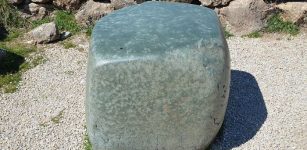 Mystery Of The Ancient Giant Wish Stone At Hattusa
Featured Stories | Oct 1, 2019
Mystery Of The Ancient Giant Wish Stone At Hattusa
Featured Stories | Oct 1, 2019 -
 On This Day In History: Mount Fuji Erupted – On Dec 16, 1707
News | Dec 16, 2016
On This Day In History: Mount Fuji Erupted – On Dec 16, 1707
News | Dec 16, 2016 -
 2,600-Year-Old Blocks Of White Cheese Discovered At Giza’s Saqqara Necropolis, Egypt
Archaeology | Sep 15, 2022
2,600-Year-Old Blocks Of White Cheese Discovered At Giza’s Saqqara Necropolis, Egypt
Archaeology | Sep 15, 2022 -
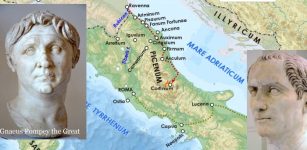 On This Day In History: Julius Caesar Defeated “Pompey The Great” At Pharsalus – On August 9, 48 BC
News | Aug 9, 2016
On This Day In History: Julius Caesar Defeated “Pompey The Great” At Pharsalus – On August 9, 48 BC
News | Aug 9, 2016 -
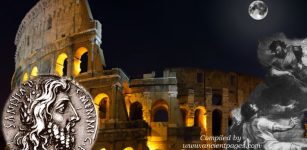 Mysterious Disappearance Of Rome’s Founder Romulus And Strange Vision Of Proculus That United Ancient Romans
Featured Stories | May 26, 2021
Mysterious Disappearance Of Rome’s Founder Romulus And Strange Vision Of Proculus That United Ancient Romans
Featured Stories | May 26, 2021 -
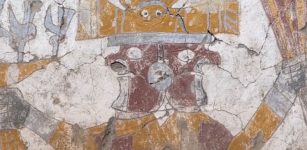 Ancient Murals Of Mysterious Two-Faced Beings And Supernatural Creatures At Pañamarca, Peru
Archaeology | Mar 21, 2023
Ancient Murals Of Mysterious Two-Faced Beings And Supernatural Creatures At Pañamarca, Peru
Archaeology | Mar 21, 2023 -
 World’s Oldest Wooden Structure Discovered And It Predates Homo Sapiens – Archaeologists Say
Archaeology | Sep 20, 2023
World’s Oldest Wooden Structure Discovered And It Predates Homo Sapiens – Archaeologists Say
Archaeology | Sep 20, 2023 -
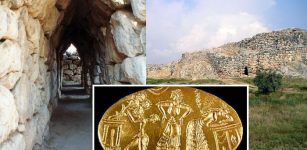 Ancient Mystery Of The Tomb Of Tiryns – Burial Place For An Unknown Mycenaean Hero?
Featured Stories | Jan 11, 2021
Ancient Mystery Of The Tomb Of Tiryns – Burial Place For An Unknown Mycenaean Hero?
Featured Stories | Jan 11, 2021 -
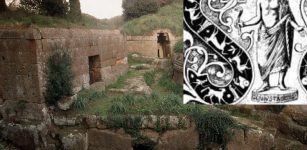 Tages: Etruscan Prophet Who Revealed Sacred Knowledge Before He Vanished
Featured Stories | Mar 1, 2016
Tages: Etruscan Prophet Who Revealed Sacred Knowledge Before He Vanished
Featured Stories | Mar 1, 2016 -
 Grave Creek Mound – One Of North America’s Most Curious Ancient Monuments
Featured Stories | Aug 8, 2024
Grave Creek Mound – One Of North America’s Most Curious Ancient Monuments
Featured Stories | Aug 8, 2024 -
 How Did The Renaissance Change Europe?
Ancient History Facts | Oct 10, 2019
How Did The Renaissance Change Europe?
Ancient History Facts | Oct 10, 2019 -
 First Americans Reached The Continent 15,000 Years Earlier Than Previously Thought – Chiquihuite Cave Reveals
Archaeology | Jul 22, 2020
First Americans Reached The Continent 15,000 Years Earlier Than Previously Thought – Chiquihuite Cave Reveals
Archaeology | Jul 22, 2020 -
 Ruins Of Xunantunich – Mayan City That Once Flourished
Civilizations | Jan 12, 2022
Ruins Of Xunantunich – Mayan City That Once Flourished
Civilizations | Jan 12, 2022 -
 Dozens Of Unique 2,500-Year-Old Ceremonial Treasures Discovered In A Drained Peat Bog
Archaeology | Jan 27, 2023
Dozens Of Unique 2,500-Year-Old Ceremonial Treasures Discovered In A Drained Peat Bog
Archaeology | Jan 27, 2023 -
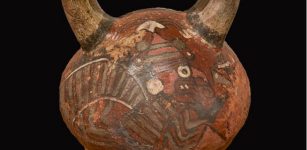 Colors On These Ancient Pots Hint At The Power Of An Empire
Archaeology | Mar 7, 2023
Colors On These Ancient Pots Hint At The Power Of An Empire
Archaeology | Mar 7, 2023 -
 Ancient Manuscript And Controversial Ancient Book Shed New Light On The Mystery Of The Toltecs
Ancient Mysteries | Sep 9, 2018
Ancient Manuscript And Controversial Ancient Book Shed New Light On The Mystery Of The Toltecs
Ancient Mysteries | Sep 9, 2018 -
 Mysterious Ancient Fortified City Of Djado On Dangerous Journey Across Sahara
Civilizations | Jun 4, 2023
Mysterious Ancient Fortified City Of Djado On Dangerous Journey Across Sahara
Civilizations | Jun 4, 2023

